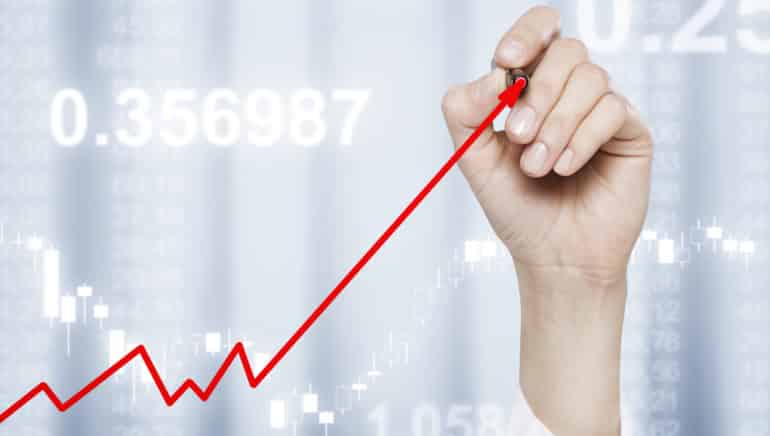 Autor: Tamas Menyhart, Fund Manager Equities, Erste Asset Management
Autor: Tamas Menyhart, Fund Manager Equities, Erste Asset Management
After years of drought, European bank shares have shown a solid performance in the year to date. The Stoxx Europe 600 Banks index, which contains the 45 largest European banks, had gained about 6% by the end of August.* Thus, European bank shares have outperformed European shares overall (by 2.6% in terms of the Stoxx 600 index) as well as US bank shares (by 4.7% in terms of the KBW Bank index*).
* Source: Bloomberg; data as of 31 August 2017
We believe that the European bank index will maintain its relative strength vis-à-vis European shares in general and US bank in the second half.

Past performance is no reliable indicator of future development.
Since the beginning of 2017 european bank shares outperformed US bank shares and european equities.

Past performance is no reliable indicator of future development.
In the long run US banks outperformed european bank shares and european equities.
Reasons for the upswing of European bank shares
The different development of the banking sector on both sides of the Atlantic has several reasons.
The first one is the base effect: the drastic share price increase of European banks in the year to date is due to the fact that they started from low levels. On the basis of the price on the day after the Brexit vote (24 June 2016), US banks were initially performing better. The reason for this discrepancy is the fact that European banks (and their shares) were affected more negatively by Brexit than their US peers. At the same time, US banks benefited from a rise in growth and inflation expectations in the wake of Donald Trump’s victory in November 2016.
The development of bond yields, driven by political events in particular this year, have had a significant impact on the good performance. Higher yields have a positive effect on banks, because the income from the interest margin, i.e. one of the main income sources for banks, increases.
Trust in united Europe
In 2017, the political climate in Europe has developed significantly better than in the USA. The biggest political risk for Europe was the presidential election in France. Macron’s victory relegated fears over a strengthening of populist forces to the backseat. The elections in the Netherlands and progress in the Italian banking sector also helped to improve the political environment.
US market euphoria has petered out
In the USA, the initial euphoria about Trump’s victory has gradually waned. The accusations in connection with the Russia scandal have not been dealt with. Cabinet staff replacements have picked up, and the tensions between the USA and North Korea have been getting more intense. The problems in connection with the increase of the debt ceiling have not been sustainably solved either. The new deadline has been pushed back to 15 December. All of this has caused the investors’ hopes for plans regarding infrastructure, tax reforms, and less regulation to gradually decline.
This loss of trust is reflected in particular in the development of the US yields and the US dollar. 10Y US yields that depend strongly on the long-term growth outlook, have decreased by more than 32bps (100bps = 1%) since the beginning of the year, and even 50bps since their year-high in March (Source: Bloomberg; data as of 31 August 2017).
While in Europe the 10Y yields of the German government bond have not been able to buck the trend of falling yields triggered by the increasing geopolitical risks in the past weeks, they were 10bps above the level of the beginning of the year as of 31 August.
Euro: up up and away
The euro, supported by the relatively comfortable political situation in the Eurozone and by the solid growth and macro data, has appreciated by more than 13% in the year to date (please see the chart below; source: Bloomberg; 31 August 2017). ECB President Draghi has come across as rather unconcerned about the stronger single currency so far and has indicated he will be announcing details on the planned reduction of the bond purchase programme by the ECB in October. This announcement has pushed the euro further up in September.

Past performance is no reliable indicator of future development
Good economic data and hope for increasing yields are driving banks
Solid economic data in the Eurozone and the imminent tapering by the ECB (i.e. the reduction of the bond purchase volume) should come with positive ramifications for European banks in the shape of a higher interest rate outlook. The persistent political tensions expected in the USA, especially in connection with North Korea and the increase of the debt ceiling, should support the euro. The stronger euro is not positive for the European banking sector per se, but banks are less negatively affected by the stronger single currency than export-oriented European sectors, which are suffering under the higher euro.
Given the aforementioned reasons, we are optimistic that European bank shares will be outperforming the overall European market also in the second half. The French presidential elections have undoubtedly effected the biggest push. The upward trend might therefore flatten slightly relative to the first half. European shares might also outperform US banks again, because the political uncertainty should continue to affect US interest rates and the US dollar negatively.
Legal note :
Prognoses are no reliable indicator for future performance.

